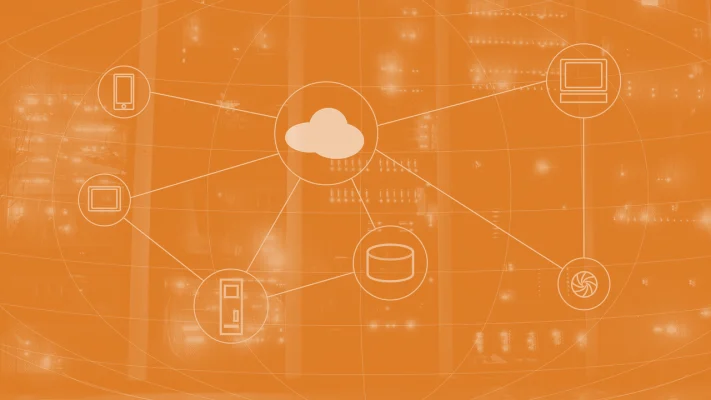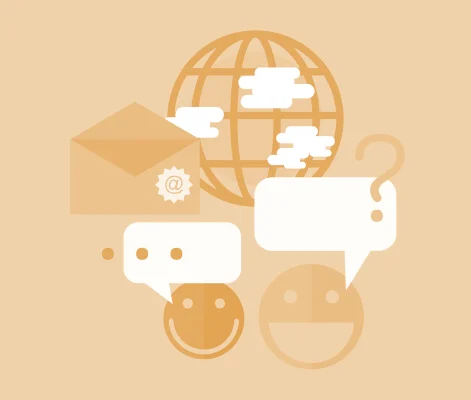Sensors are now everywhere. Thanks to the smartphone revolution, a large range of sensors used in consumer electronics and also industrial applications have tumbled in price over the last decade. And with IoT’s ever-increasing presence in our day-to-day lives, they are now more prevalent than ever.
That being said, what are the different types of sensors used in IoT? And furthermore, what are their applications? We’ve compiled the top 10 IoT sensors you’re likely to come across and what they’re used for.
1. Temperature Sensors
In the past, IoT temperature sensors have been used for heat, ventilation, and air conditioning systems (HVAC), refrigerators, and other similar devices used for environmental control. However, the emergence of IoT has seen its role expand. Nowadays, you can find temperature sensors throughout industries such as manufacturing and agriculture.
How are they used within these industries? In the manufacturing process, there are many machines that need both specific environment temperatures and a certain device temperature. Using an IoT temperature sensor ensures both of these remain optimal.
When it comes to agriculture, the soil temperature is crucial for crop growth. Previously monitoring this would have been a tiresome, manual process. Now temperature sensors make it easier to monitor and control remotely via an IoT application. This helps enable the mass production of plants.
Popular IoT temperature sensor manufacturers include:
2. Pressure Sensors
An IoT pressure sensor is any device that senses pressure and converts it into an electric signal. The level of voltage given out by the sensor depends on the level of pressure applied.
These sensors enable IoT systems that monitor systems and devices that are pressure propelled. If there’s any deviation from standard pressure ranges, the device notifies the administrator of the problem.
These are commonly found and used in the maintenance of whole water and heating systems. This is because they can easily detect any fluctuations or drops in pressure. However, pressure sensors are also used within the manufacturing industry too.
Popular IoT pressure sensor manufacturers include:
3. Accelerometers
An IoT accelerometer detects – or senses – an object’s acceleration. In other words, the rate of change of an object’s velocity with respect to time.
On top of acceleration, the accelerometer can also detect changes in gravity. Typical uses of accelerometers in IoT include smart pedometers and monitoring driving fleets. However, they’re present in millions of devices now, including smartphones.
They can also be used for anti-theft protection. Accelerometers alert the system they’re used in if an object that should be stationary moves.
Popular IoT accelerometer sensor manufacturers include:
4. Proximity Sensors
IoT proximity sensors provide non-contact detection of objects that are in close proximity to the sensor. They usually do this by emitting electromagnetic fields or beams of radiation such as infrared.
These are frequently found within the retail industry. This is because they can detect motion and the correlation between customers and the product they might be interested in. In turn, the user can be notified of any discount, special offers, or similar products located near the sensor.
Proximity sensors may also be found in parking lots of malls, stadiums, or airports to indicate available parking spots.
Popular IoT proximity sensor manufacturers include:
5. Humidity Sensors
IoT humidity sensors measure the amount of water vapor in the air. In scientific terms, they measure Relative Humidity (RH).
This kind of sensor is usually used in addition to IoT temperature sensors when a manufacturing process requires absolute perfect working conditions.
They’re usually found in heating, ventilation, and air conditioning (HVAC) systems – in both the home and business settings. However, they are also used by meteorological centers to report and predict the weather.
Popular IoT humidity sensor manufacturers include:
6. Image Sensors
IoT image sensors are used to convert images into electronic signals. These are then either displayed or become electronically stored files.
The most common use of image sensors is in digital cameras and IoT WiFi modules.
Popular IoT image sensor manufacturers include:
If you’re looking for an IoT WiFi module to integrate image sensors into, check out our guides to these different WiFi modules and MCUs below:
- A guide to NXP IoT WiFi Modules, Dev Boards & Rapid Prototyping Kits
- A guide to Microchip WiFi Modules and Development Boards for IoT
- A guide to Texas Instruments WiFi Modules and Development Boards for IoT
A complete guide to ESP8266 for IoT
7. Level Sensors
Level sensors are used to detect the levels of certain types of objects. These include liquids, granular materials, and powders.
As you can imagine, this kind of sensor is useful and used in many different industries and applications. These include:
- Oil manufacturing
- Beverage manufacturing
- Food manufacturing
- Water treatment
Popular IoT level sensor manufacturers include:
8. Gas Sensors
Gas sensors monitor and detect changes in the air. These sensors are vital to our safety as they’re able to detect the presence of potentially harmful or even toxic gases.
Gas sensors are most commonly used within the mining, oil and gas, and chemical research. However, gas sensors are also prominent in most homes via carbon dioxide detectors.
Popular IoT gas sensor manufacturers include:
9. Infrared Sensors
An Infrared Sensor – otherwise known as an IR sensor – scan and sense characteristics within their surroundings. They do this by either emitting or detecting infrared radiation. In addition, these IoT sensors are also able to measure the heat coming off of objects.
Infrared sensors can be adapted for several different IoT applications. However, their most common usage has been within the healthcare industry. For instance, infrared sensors can be used to monitor or blood flow or blood pressure.
Popular IoT infrared sensor manufacturers include:
Want to remotely control your next healthcare IoT application via your mobile phone? Check out Nabto’s IoT connectivity platform.
10. Motion Detector Sensors
Not to be confused with proximity sensors, motion detector sensors are used to detect physical movement in a given area. In turn, this then sets off an electronic signal.
The most obvious use of this is within the security industry. Businesses use motion detector sensors in areas where there should be no movement. The sensor kicks in and alerts the systems administrator – or security guard – when there is any form of movement.
Besides security, these IoT sensors can also be found in many devices within modern commercial buildings. These include:
- Boom barriers
- Automated sinks, hand dryers, and towel dispensers
- Energy management systems
Popular IoT motion sensor manufacturers include:
Bottom Line
From our homes to our work, the ever-increasing emergence of the internet of things in our day-to-day lives means that IoT sensors are everywhere.
Moreover, the number of industries they’re used in show that adapting and applying these sensors to your IoT application is no longer out of your reach. If you want to learn more about how Nabto can help you accomplish this, request a consultation today.
Read Our Other Resources
We’ve published a range of IoT resources for our community, including:
- A Guide to IoT Protocols & Standards, which provides a complete overview of all the major protocols and standards available.
- Buying versus building an IoT platform, which discusses how to choose the best option for you.
- Our guide on how to Develop IoT Apps and what platforms you can use.
- How to Choose the Best IoT WiFi Module and what to consider when making your choice.
- A complete Guide to Microcontrollers for IoT, which explains all your options when it comes to choosing an MCU for your project.







